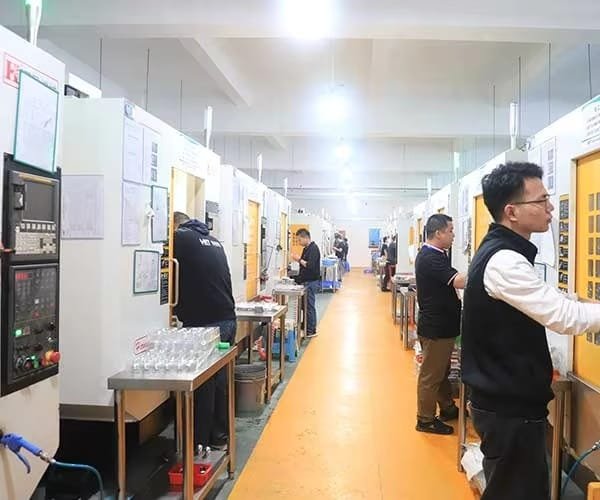Modern industry depends critically on the very exact and effective manufacturing method known as Swiss screw machining. Often utilized in sectors including aerospace, medical, electronics, and automotive, this precision machining technique is well-known for producing small, complex, high-quality parts. Swiss screw machining has evolved to provide innovative solutions for precision engineering as sectors require ever more sophisticated and small-sized components.
The principles of Swiss screw machining will be discussed in this blog together with its benefits, uses, difficulties, why it is still a preferred choice for high-precision manufacturing.
What is Swiss Screw Machining?

Using a Swiss-type lathe, Swiss screw machining is a specialist form of CNC machine (Computer Numerical Control) machining. Developed in Switzerland in the late 19th century, this technique was meant to produce extremely precisely manufactured watch components. Swiss-type lathes differ from standard lathes in that their sliding headstock moves the workpiece across a guide bushing. Tight tolerances and minimum deflection made possible by this enable Swiss screw machining to be perfect for manufacturing small, intricate components.
Swiss screw machining was long connected with mechanical cam-operated equipment. Modern developments have, however, produced CNC-controlled Swiss machines with even more precision, efficiency, and automation capacity.
How Swiss Screw Machining Works
Operating on a different concept, Swiss screw machining uses many tools concurrently to process a workpiece fed through a guiding bushing. Even for long and thin components, this approach reduces deflection and guarantees exact tolerances. The main actions in the process consist in:
- Raw material feed: A bar stock placed into the machine runs constantly through the Swiss lathe.
- A precision bushing guides the workpiece, therefore offering stability and reducing vibrations while cutting.
- Various tools revolve, drill, grind, and thread with very great accuracy.
- Multiple tools run simultaneously in simultaneous machining, hence lowering cycle times and raising efficiency.
- High volume production would find the equipment perfect since it runs automatically and continuously.
Key Components of a Swiss Screw Machine

A Swiss screw machine comprises of numerous necessary parts that support screw machine shop its efficiency and accuracy:
- High accuracy is made possible by sliding headstock, which moves the workpiece longitudinally whilst machining is in progress.
- Guide bushing helps the workpiece near the cutting tool to be supported, therefore lowering vibrations and increasing accuracy.
- Many tool stations enable simultaneous machining processes, therefore drastically cutting production time.
- Continuously feeds raw materials into the machine, an automatic bar feeder guarantees constant production.
- Modern Swiss machines come with CNC systems, which offer programmed accuracy and automation.
Advantages of Swiss Screw Machining

Precision manufacturing prefers Swiss screw machining because of several benefits it presents customers.
1. Unmatched Precision
Tolerances of Swiss screw machines can be as low costs close to ±0.0002 inches. Applications where even the smallest departure can damage performance depend on this degree of accuracy.
2. Superior Surface Finish
The stability the guide bushing offers helps products made using Swiss screw machining have flat surfaces, therefore lowering the requirement for extra finishing procedures.
3. High Production Efficiency
Swiss machines with multi-tool capabilities and automatic operation can rapidly and consistently generate great numbers of parts consistent quality. This qualifies them as perfect for low downtime mass production.
4. Versatility in Materials
Among the several materials that Swiss screw machining can handle are:
- Aluminum titanium brasses, copper, plastics (like PEEK, PTFE, and Delrin), stainless steel
5. Reduced Material Waste
The exact cutting technique reduces waste, and production volume so saving money and promoting environmentalism.
6. Complex Geometries and Micro-Machining
Challenging for traditional machining techniques, Swiss screw machines can create sophisticated geometries like deep holes, delicate threads, and thin walls from complex objects.
Applications of Swiss Screw Machining

Swiss screw machining is indispensable in many different sectors since it makes small, highly precise components possible rapid production.
Medical Industry
Swiss screw machining is mostly utilized in the medical industry to provide high precision parts and components needed in life-saving tools. Among the often used applications are:
- Bone screws and spinal implants are surgical implants.
- Orthopaedic screws and plates
- Instruments for dentistry and implants
- Particles of a catheter
- Parts of a hearing aid
Aerospace Industry
Highest degrees of dependability reliability and accuracy are required in aerospace applications. Manufactured using Swiss screw machining are:
- Fasteners and connections used in aircraft
- Parts for a precision fuel system
- Parts for Gyroscope
- Engineering parts
- Parts of spacecraft instruments
Electronics Industry
A major trend in the electronics sector is shrinking machining operation, hence Swiss screw machining is absolutely essential. Uses include:
- microconnectors
- Parts of sensors
- Precision pins and contacts
- Radiofrequency connectors
- Parts for heat dissipation
Automotive Industry
Swiss screw machining plays a vital role in automotive engineering, where precision and durability are critical. Common parts include:
- Fuel injecting nozzles
- Transmission components
- Parts related to a brake system
- engine sensors and connectors
- Valley parts
Challenges of Swiss Screw Machining

Swiss screw machining has certain difficulties even if it offers many benefits cnc screw machine:
- Greater Initial Investment: Swiss lathes cost more than standard CNC equipment. Still, the long-term savings of accuracy and efficiency usually exceed the initial outlay.
- Complex Programming: Skilled programmers knowing CNC coding and optimization are necessary for the multi-tool operations.
- Longer Setup Time: Especially for complex items, setting up Swiss machines for fresh production runs might take time.
- Restricted Part Size: Swiss machines are not appropriate for large-scale parts even if they shine at small, delicate components.
Conclusion
In precision manufacturing, Swiss screw machining is a breakthrough offering great accuracy, efficiency, and adaptability. Its capacity to create complex parts with exact tolerances has made it a necessary operation in sectors including electronics, medical, and aerospace cnc swiss screw machine. Although Swiss screw machining calls for more initial investment and specialized knowledge, the advantages of screw machine products greatly exceed the difficulties, hence this technology is becoming increasingly important for contemporary manufacturing.

